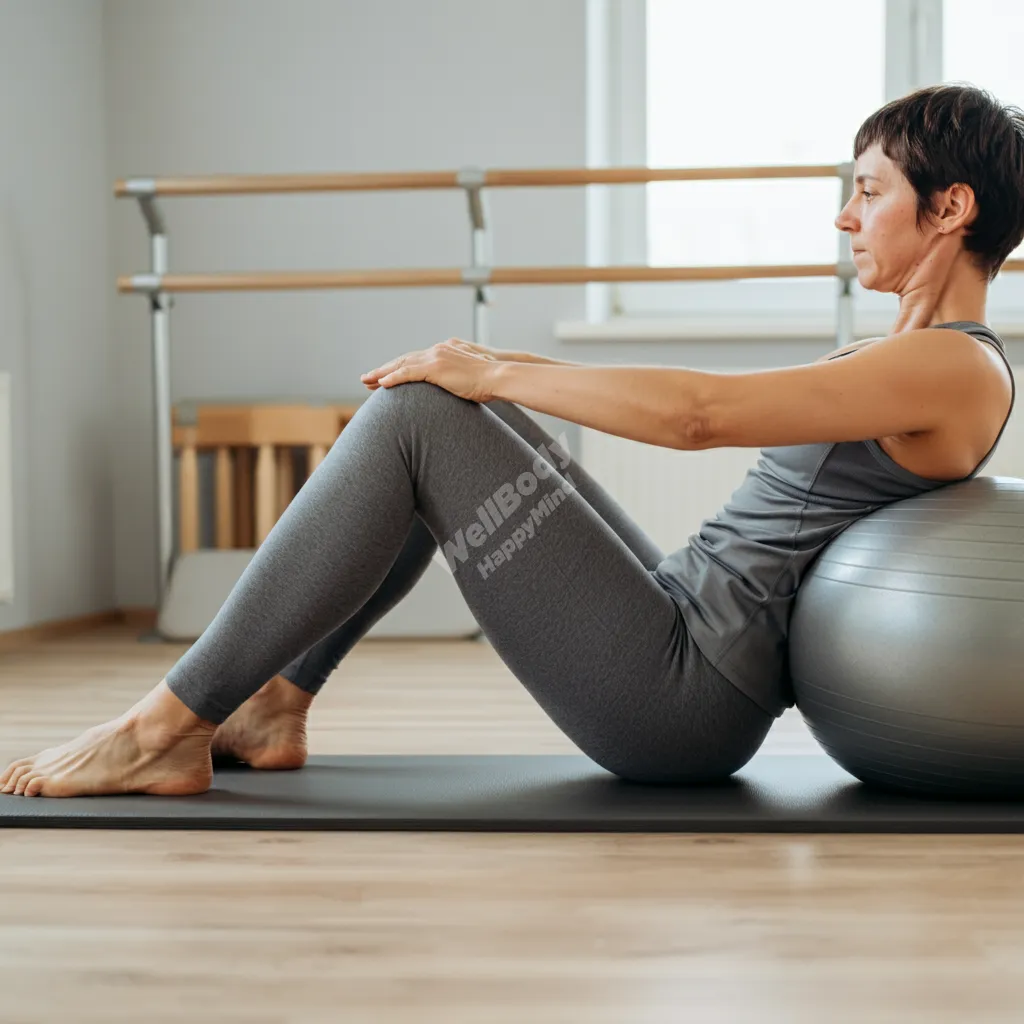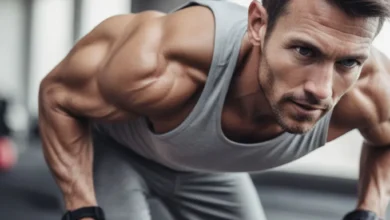Pilates Routines: Core Strength & Flexibility Boosters

Introduction
Did you know that over 12 million people practice Pilates worldwide? This popular fitness method offers a unique blend of strength training and flexibility that can transform your body and mind. In this article, we’ll explore four Pilates-based routines designed to boost your core strength and enhance flexibility.
Pilates is more than just a workout. It’s a holistic approach to fitness that focuses on:
- Building a strong core
- Improving posture
- Increasing flexibility
- Enhancing mind-body connection
Whether you’re a fitness newbie or a seasoned athlete, these routines will help you achieve a stronger, more flexible body.
Understanding Pilates and Its Principles
Pilates is a low-impact exercise system developed by Joseph Pilates in the early 20th century. It aims to strengthen the body, with a particular focus on core strength.
Key Principles of Pilates
- Concentration: Focus your mind on each movement
- Control: Perform exercises with precision
- Centering: Engage your core in every exercise
- Breath: Coordinate breathing with movement
- Precision: Pay attention to proper form
- Flow: Move smoothly between exercises
These principles work together to improve core strength and boost flexibility. By focusing on controlled movements and proper form, Pilates helps you build a strong, balanced body.
How Pilates Improves Core Strength and Flexibility
Pilates targets your deep abdominal muscles, often called the “core”. These muscles support your spine and help maintain good posture. Regular Pilates practice can lead to:
- A stronger, more stable core
- Improved posture and balance
- Increased flexibility in muscles and joints
- Better body awareness and control
By combining strength training with stretching, Pilates offers a well-rounded approach to fitness. It’s an effective way to build a strong, flexible body without putting excessive strain on your joints.
Benefits of Pilates-Based Fitness Routines
Pilates offers a wide range of physical and mental benefits. Let’s explore why this fitness method has gained such popularity.
Physical Benefits
- Stronger core muscles: Pilates targets your deepest abdominal muscles
- Improved posture: Helps align your spine and reduce back pain
- Increased flexibility: Stretches and lengthens muscles
- Better balance: Enhances body awareness and stability
- Injury prevention: Strengthens smaller, supporting muscle groups
Mental and Emotional Benefits
- Stress reduction: Focuses on breath work and mindful movement
- Improved concentration: Requires full attention during exercises
- Boosted mood: Releases endorphins, like other forms of exercise
- Enhanced body awareness: Promotes a stronger mind-body connection
- Increased self-confidence: Builds strength and improves body image
Suitable for All Fitness Levels
Pilates is adaptable to various fitness levels. Beginners can start with basic moves and gradually progress. Advanced practitioners can challenge themselves with complex exercises. This versatility makes Pilates an excellent choice for:
- People new to exercise
- Fitness enthusiasts looking for variety
- Athletes seeking to improve performance
- Those recovering from injuries (under professional guidance)
Essential Pilates Equipment
While Pilates can be done with just a mat, certain equipment can enhance your practice. Here’s what you need to get started:
Mat
A good-quality mat is the most important piece of equipment. It should be:
- Thick enough to cushion your spine
- Long enough to accommodate your full body
- Non-slip to provide stability during exercises
Resistance Bands
Resistance bands add variety to your workouts. They:
- Increase the challenge of exercises
- Help improve strength and flexibility
- Come in different resistance levels for progression
Pilates Ball
A Pilates ball (also called a stability ball) can:
- Help improve balance and core strength
- Add instability to exercises for a greater challenge
- Support your body during certain stretches
Optional Equipment
For a more comprehensive home studio, consider:
- Pilates ring (magic circle)
- Foam roller
- Small hand weights
- Pilates reformer (for advanced practitioners)
Remember, you don’t need all this equipment to start. A mat and your body weight are enough for an effective Pilates workout.

4 Pilates-Based Fitness Routines for Core Strength and Flexibility
Let’s dive into four effective Pilates routines designed to boost your core strength and flexibility. Each routine targets different aspects of Pilates practice.
Routine 1: The Classic Mat Workout
This routine focuses on fundamental Pilates exercises that target your core and improve overall body awareness. It’s perfect for beginners and seasoned practitioners alike.
- The Hundred: Lie on your back, lift your head and shoulders, pump your arms up and down while holding your legs in a tabletop position. Breathe in for 5 counts and out for 5 counts, repeating 10 times.
- Roll Up: Start lying down, arms overhead. Slowly roll up to a seated position, then roll back down. Repeat 5-8 times.
- Single Leg Circles: Lie on your back, extend one leg to the ceiling. Circle the leg 5 times in each direction, then switch legs.
- Spine Stretch Forward: Sit with legs extended, reach forward, curling your spine. Hold for 3 breaths, then slowly roll back up. Repeat 3-5 times.
- Saw: Sit with legs wide apart, twist to one side, reaching the opposite hand towards the outside of your foot. Alternate sides 5 times each.
Aim for 2-3 sets of this routine, focusing on proper form and controlled breathing.

Routine 2: Resistance Band Core Blaster
Using a resistance band adds an extra challenge to your Pilates workout, helping to build strength more quickly.
- Band Pull Down: Sit tall, hold band overhead. Pull down to chest level while engaging your core. Do 10-12 reps.
- Seated Row: Sit with legs extended, loop band around feet. Pull band towards your waist, squeezing shoulder blades. Do 12-15 reps.
- Pilates Scissors: Lie on your back, wrap band around one foot. Alternate lifting legs while pulling the banded leg towards you. Do 10 reps per leg.
- Side-Lying Leg Lifts: Lie on your side, loop band around ankles. Lift top leg, feeling resistance. Do 12-15 reps per side.
- Kneeling Arm Extension: Kneel, hold band in both hands at chest level. Extend arms forward, engaging core. Do 10-12 reps.
Remember to keep the band taut throughout each exercise for maximum benefit.

Routine 3: Pilates Ball Core and Flexibility Challenge
The Pilates ball adds an element of instability, forcing your core to work harder to maintain balance.
- Ball Plank: Place forearms on the ball in a plank position. Hold for 30 seconds, gradually increasing time as you get stronger.
- Ball Crunch: Lie on the ball with lower back supported, hands behind head. Crunch up, focusing on core engagement. Do 15-20 reps.
- Ball Bridge: Lie on your back, feet on the ball. Lift hips, rolling the ball towards you. Do 12-15 reps.
- Ball Pass: Lie on your back, ball between your feet. Pass the ball from feet to hands and back. Repeat 10 times.
- Seated Ball Twist: Sit on the ball, feet flat on the floor. Twist side to side, keeping hips stable. Do 20 total twists.
For beginners, start with a partially deflated ball for more stability.

Routine 4: Advanced Pilates Flow for Core and Flexibility
This routine combines exercises into a fluid sequence, challenging your core strength, flexibility, and coordination.
- Start in a standing position, arms by your sides.
- Roll down to a forward fold, then walk out to a plank position.
- Perform a push-up, then lower to your stomach for a cobra stretch.
- Push back to downward dog, hold for 3 breaths.
- Step one foot forward into a lunge, twist towards the front leg.
- Step back to downward dog, repeat on the other side.
- Jump or step feet to hands, slowly roll up to standing.
- Repeat the entire sequence 3-5 times.
Focus on smooth transitions and maintain steady breathing throughout the flow.

Incorporating Pilates-Based Routines into Your Fitness Regimen
To reap the full benefits of Pilates, it’s important to practice regularly and consistently. Here are some tips to help you integrate these routines into your lifestyle:
Frequency Recommendations
- Beginners: Start with 2-3 sessions per week, 20-30 minutes each
- Intermediate: Aim for 3-4 sessions per week, 30-45 minutes each
- Advanced: Practice 4-5 times per week, 45-60 minutes each
Remember, consistency is key. It’s better to do shorter sessions more frequently than longer sessions less often.
Combining with Other Forms of Exercise
Pilates complements many other fitness activities. Consider pairing it with:
- Cardio (running, cycling, swimming) for overall fitness
- Strength training to build muscle mass
- Yoga for additional flexibility and mindfulness practice
Aim for a balanced workout routine that includes strength, flexibility, and cardiovascular exercise.
Common Mistakes to Avoid in Pilates-Based Routines
To maximize the benefits of your Pilates practice, be aware of these common errors:
Improper Form and Alignment
- Arching the back during core exercises
- Tensing the neck instead of engaging the core
- Misaligning the spine in standing exercises
- Overextending joints, especially in the lower back
Always prioritize proper form over repetitions. If you’re unsure, consult a certified Pilates instructor.
Neglecting Breath Work
Breathing is a crucial part of Pilates. Avoid holding your breath during exercises. Instead, focus on:
- Inhaling to prepare for a movement
- Exhaling during the most challenging part of the exercise
Proper breathing helps you engage your core more effectively and reduces tension in your body.
Rushing Through Movements
Pilates is about quality, not quantity. Rushing through exercises can lead to:
- Poor form
- Reduced effectiveness
- Increased risk of injury
Take your time and focus on each movement. Slow, controlled exercises are more beneficial than rushed repetitions.
Conclusion
Pilates-based fitness routines offer a powerful way to build core strength and enhance flexibility. By incorporating these four routines into your fitness regimen, you can:
- Develop a stronger, more stable core
- Improve your overall flexibility
- Enhance your body awareness and posture
- Reduce the risk of injury in daily activities and other exercises
Remember, the key to success with Pilates is consistency and proper form. Start with the routines that match your current fitness level and gradually progress as you build strength and confidence.
Whether you’re looking to supplement your existing workout routine or start a new fitness journey, these Pilates-based routines provide an excellent foundation for a stronger, more flexible you.



